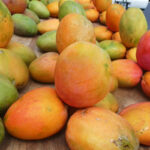Despite inflation, US orange juice sales remain strong

Active orange juice consumers in the United States increased slightly in 2023, despite inflationary pressure on shoppers, according to a new study by the University of Florida Institute of Food and Agricultural Sciences (UF/IFAS).
The OJ tracker survey asked participants to report the type of groceries they purchased within the previous 30 days. People who purchased orange juice during that period were defined as active consumers.
That shopper category increased from 48% in 2021 to 51% in 2022 and remained constant during the first four months of 2023, the study found.
Analysis of the OJ tracker data found the proportion of consumers with a positive perception of orange juice remained steady and robust. This was attributed, in part, to sustained marketing efforts on the health and wellness attributes of consuming orange juice from 100% fruit.
“There is an intrinsic value that consumers have for Florida orange juice. When they think of Florida, orange juice is often part of the imagery,” said Marisa Zansler, director of economic and market research with the Florida Department of Citrus and a co-author of an Ask IFAS document tracking OJ purchasing habits.
Price stress for shoppers
Despite the uptick in the active consumer category, higher OJ prices did affect overall consumer confidence. The share of buyers who intended to purchase orange juice during their trip decreased slightly to 65% in 2023 from 67% in 2021.
"A gallon of orange juice cost $8.82 by the first quarter of 2023, 14% higher than 2022 when customers paid $7.77," the study said. "For many consumers, the price proved too high and dollar sales correspondingly decreased 11% from $860 million to $765 million during that first quarter on a year-over-year basis."
Shoppers were aware, the study noted, that price increases were not specific to orange juice, and that limiting food purchases due to inflation had become a common cost-saving strategy.
Production challenges
Florida’s production, historically, has accounted for 85% of the nation’s oranges for processing. The state’s industry, however, has faced extensive challenges due to citrus greening, as well as weather-related issues. Florida’s orange crop reached historically low levels of production in 2022 and 2023.
In 2022, Florida saw multiple natural disasters. Hurricanes, freezes, and citrus greening dealt hits to the state’s orange production, which declined by 22.3% to 41.05 million boxes.
Worldwide, OJ availability also declined by 10% due to production challenges in Florida, as well as Brazil and other major production hubs hit by citrus greening.
Meanwhile, U.S. imports of Brazilian orange juice products have increased in response to tight domestic supplies. As of January, year-to-date orange juice imports from Brazil reached 302 million pounds, an increase of nearly 50 million pounds from the previous year, according to the USDA.














































